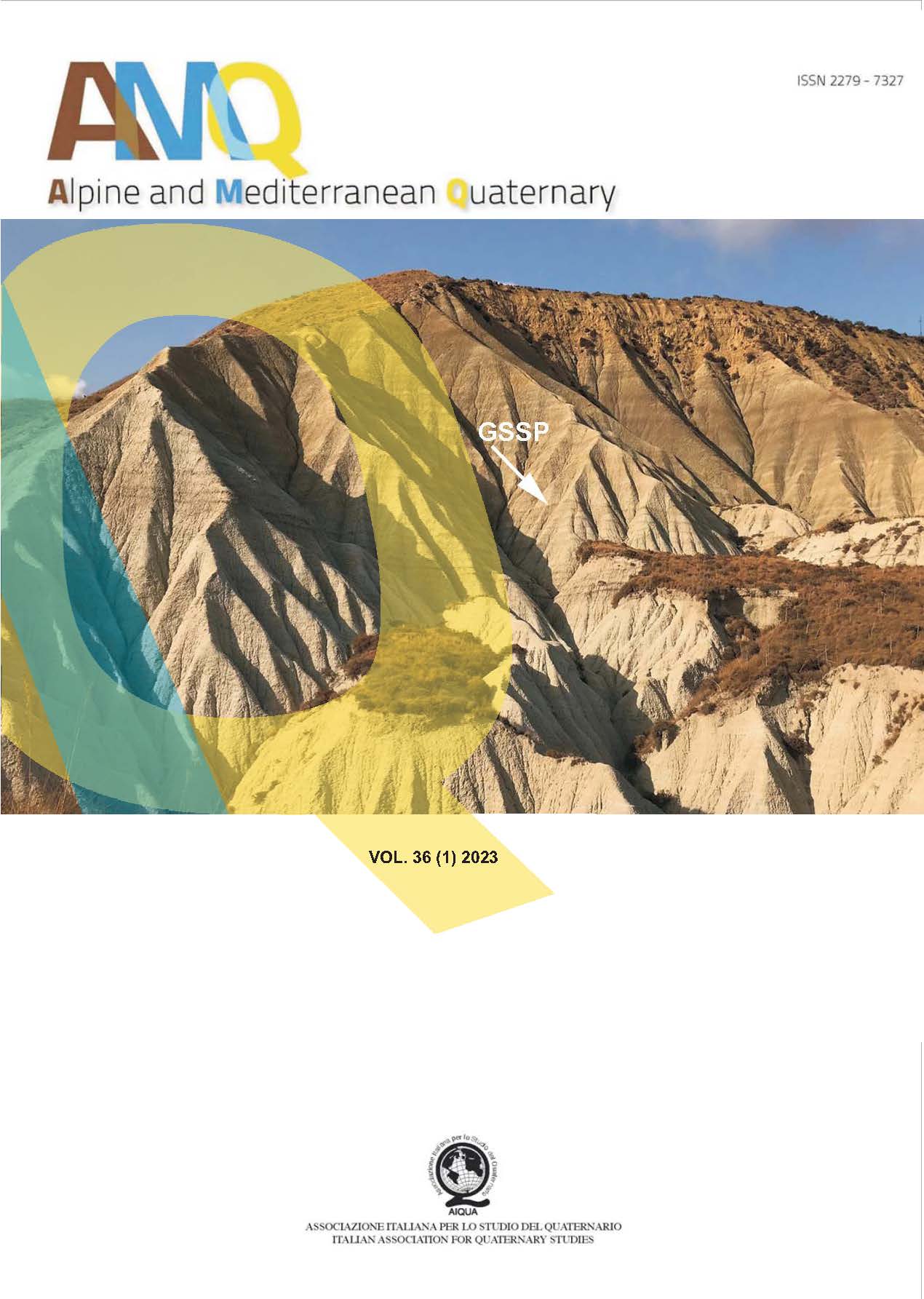Beware of the “Wolf event” – Remarks on large mammal dispersals in Europe and the late Villafranchian faunal turnover
Main Article Content
Abstract
The “Wolf event” is a prominent concept in large mammal biochronology of western Europe. It was defined in the 1980s as an intercontinental “dispersal event”, best represented by the arrival of a “primitive wolf”, Canis etruscus, but also involving other species. The Wolf event basically denoted the late Villafranchian faunal turnover, first expressed in Italy in the Olivola Faunal Unit. This event was also considered approximately coincident with the “old” Pliocene-Pleistocene boundary (~1.8 Ma, Gelasian-Calabrian transition), hence indicating important environmental changes and representing a relevant tool for correlation. Whilst it became soon clear that sporadic finds of modern canids (and, to some extent, other species) pre-dated the age assumed for the Wolf event, several authors continued to use the term and to associate it to the late Villafranchian, referring to the “massive expansion” of the species involved, rather than their first appearance in the European fossil record. Several bioevents traditionally included in the Wolf event and others that have been considered to occur later are today already documented in middle Villafranchian faunas. If a single species has to be taken as representative of the late Villafranchian faunal turnover, the best candidate based on the current evidence is the giant hyena Pachycrocuta brevirostris. The “Pachycrocuta brevirostris event” (as a replacement term for the Wolf event) can be characterized by the arrival in Europe of the giant hyena and Panthera gombaszoegensis, and the increase in the documentation of other species traditionally included in the Wolf event. However, this does not correspond to a sharp faunal turnover as traditionally envisioned for the Wolf event and it is possibly heralded in faunas slightly older than Olivola at ~2.0 Ma.
Article Details
Issue
Section

This work is licensed under a Creative Commons Attribution-NonCommercial-NoDerivatives 4.0 International License.
The Author grants usage rights to others using an open license (Creative Commons or equivalent) allowing for immediate free access to the work and permitting any user to read, download, copy, distribute, print, search, or link to the full texts of articles, crawl them for indexing, pass them as data to software, or use them for any other lawful purpose.

